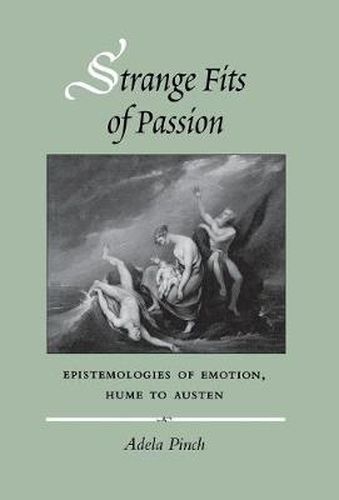Readings Newsletter
Become a Readings Member to make your shopping experience even easier.
Sign in or sign up for free!
You’re not far away from qualifying for FREE standard shipping within Australia
You’ve qualified for FREE standard shipping within Australia
The cart is loading…






This text contends that when late 18th- and early 19th-century writers sought to explain the origins of emotions, they often discovered that their feelings may not really have been their own. It explores the paradoxes of representing feelings in philosophy, aesthetic theory, gender ideology, literature, and popular sentimentality, and it argues that this period s obsession with sentimental, wayward emotion was inseparable from the dilemmas resulting from attempts to locate the origins of feelings in experience. The book shows how these epistemological dilemmas became gendered by studying a series of extravagantly affective scenes: Hume s extraordinary confession of his own melancholy in the Treatise of Human Nature; Charlotte Smith s insistence that she really feels the gloomy feelings portrayed in her Elegiac Sonnets; Wordsworth s witnessing of a woman poet reading and weeping; tearful exchanges between fathers and daughters in the gothic novel; the climactic debate over the strengths of men s and women s feelings in Jane Austen s Persuasion; and the poetic and public mourning of a dead princess in 1817.
$9.00 standard shipping within Australia
FREE standard shipping within Australia for orders over $100.00
Express & International shipping calculated at checkout
This text contends that when late 18th- and early 19th-century writers sought to explain the origins of emotions, they often discovered that their feelings may not really have been their own. It explores the paradoxes of representing feelings in philosophy, aesthetic theory, gender ideology, literature, and popular sentimentality, and it argues that this period s obsession with sentimental, wayward emotion was inseparable from the dilemmas resulting from attempts to locate the origins of feelings in experience. The book shows how these epistemological dilemmas became gendered by studying a series of extravagantly affective scenes: Hume s extraordinary confession of his own melancholy in the Treatise of Human Nature; Charlotte Smith s insistence that she really feels the gloomy feelings portrayed in her Elegiac Sonnets; Wordsworth s witnessing of a woman poet reading and weeping; tearful exchanges between fathers and daughters in the gothic novel; the climactic debate over the strengths of men s and women s feelings in Jane Austen s Persuasion; and the poetic and public mourning of a dead princess in 1817.